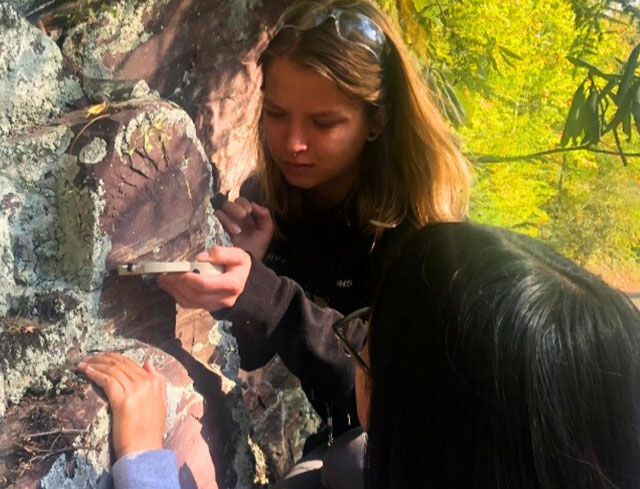A Picture and a Thousand Words
04 Aug 2021
George Masa and Horace Kephart
By: Ran Shaffner, Archivist Emeritus, Highlands Historical Society

One of the most beautiful national parks in America owes its existence to a partnership between two conservationists: a retired librarian and a Japanese immigrant. Neither cared about wealth, fame, power or the usual trappings of civilization. What bound them together was a mutual love of nature.
During the early 1900s, timber companies were clearcutting the grand forests of western North Carolina and eastern Tennessee. Logging was no longer selective and local. It had evolved into large-scale commercial slashing of the land, threatening to decimate half a million acres of giant old-growth trees.
Horace Kephart, a Missouri librarian turned outdoorsman who lived at Hazel Creek, first wrote about the rampant destruction of this region’s natural glory in “Our Southern Highlanders,” published in 1913. By the 1920s, he was writing an article for National Geographic, which needed photographs to illustrate vividly what he was terrified to lose.
Masahara Iizuka (George Masa), an immigrant from Osaka, Japan, and self-taught photographer who lived in Asheville and had hiked the Smoky Mountains, mapping its trails, agreed to illustrate Kephart’s article with his photographs. It was Kephart’s eloquent writings and Masa’s astonishing images that ultimately saved the Smokies from obliteration and established eastern America’s first national park.
For Kephart, his strength lay in the powerful influence of his words, which he continued to wield until his untimely death in 1931. But for Masa, his most powerful weapon was his camera. Nothing does more to inspire social change like a vivid photo image.
Only recently has the growing interest in Masa focused on the time he spent in Highlands, NC. At the invitation of hotel-owner Frank Cook, Masa came to the Highlands Plateau in 1929 to capture the natural beauty of a singularly biodiverse environment. It included one of the most unique forest preserves in all of eastern North America, known locally as a “primeval forest.”
Even after the creation of Nantahala National Forest in 1920, logging companies had their sights set on 1,500 privately-owned acres of giant tulip poplars, ancient hemlocks, white oaks, red maples and yellow birch that lay between Whiteside and Bear Pen mountains. Masa photographed the Richardson Oak, Highlands Falls and Whiteside Cliffs in deep shadows and penetrating light. He captured on film a world of hills and valleys and mountains, charming homes, luminescent Dry Falls nestled in a dense dark forest, and glorious sunrises and sunsets reflected in cloud-filled skies.
For the most part, much of what he photographed has been preserved, with the regrettable exception of the “primeval forest.” We know that in 1946, after World War II, it took just three years for a lumber company to turn that 1,000-year-old forest into pulp wood.
At the same time that Masa was photographing the plateau, Professor Thomas Harbison of Highlands was playing the role of Kephart. In 1930, Harbison was pleading for preservation of the primeval forest as the vital link between the plateau’s ancient past and its fragile future.
Harbison wrote, “Buildings at best are transient things and those of any one place are not very different from others. Our future depends largely on the care we take of our forests.
“Highlands still has one priceless treasure that few, if any, other places can duplicate. Other sections have larger streams, higher mountains and other features that we do not have, but we still have an unbroken forest that will make Highlands famous if we can preserve it.
“It is a distinct type of forest and should be handed down to future generations just as it has come down to us. It is ages old. It was old, very old, long before the Rocky mountain range and the lofty Himalayas reared their peaks into the clouds. To me there is nothing more sacred on our earth than these forests which were God’s first creation.”
One can only speculate whether, if Harbison had partnered with Masa to inspire the public by word and photograph to protect and preserve the primeval forest, it could have been saved. Harbison tried to raise money to buy the forest at $500 a person. But without a Kephart–Masa joint crusade to achieve his goal, the land was sold between 1938 and 1943.
It is home today to three golf courses, which can’t be faulted for loss of the forest. They acquired the land only after the timber company had logged it. But for one brief moment, there existed the potential for a writer and a photographer—together—to preserve a local treasure for future generations.













